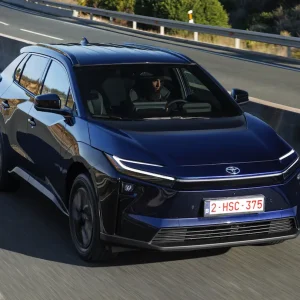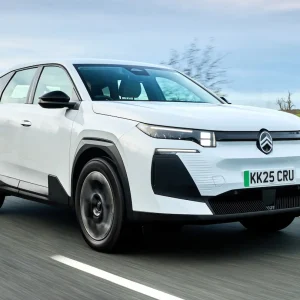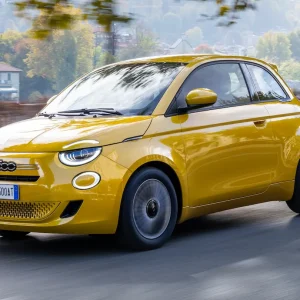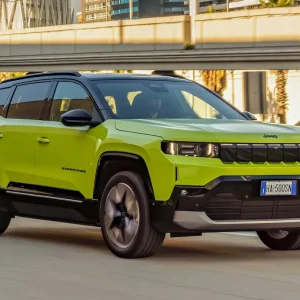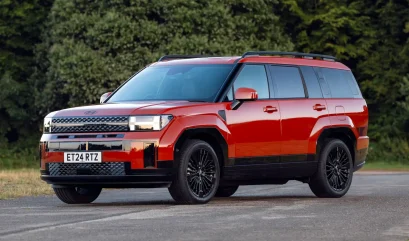
When a carmaker launches a new model, we wouldn’t normally expect them to describe the design with the word ‘boxy’. However, this is the adjective that Hyundai is openly (and accurately) applying to the new, fifth-generation version of its Santa Fe large SUV. It’s a clear reflection of a focus on adding interior space – but also, of standing out a little in the crowded SUV marketplace. This is something the designers have definitely achieved, as the new model’s angular looks and increased size (it’s 45mm longer than the previous Santa Fe) combine to make it a commanding and imposing presence on a UK High Street.
Interior space
The benefits of the model’s size and design are obvious when climbing on board – particularly when doing so through the rear doors. The second row of seats on the seven-seater model tested here slide backwards and forwards, and in the rear-most position offer loads of legroom, as well as plenty of headroom. The latter is something that’s maintained all the way back, with even the third-row seats offering plenty of clearance for adults to sit up straight. Legroom is more compromised, mainly due to the height of the floor back there, but there is still room in all for seven adults to occupy the Santa Fe in reasonable comfort for a short trip (five- and six-seater versions are also available). The second-row seats folding and sliding electrically at a single button press makes third-row access easy. A 621-litre boot (with the third-row seats folded) is practical, but shallower than you might expect.
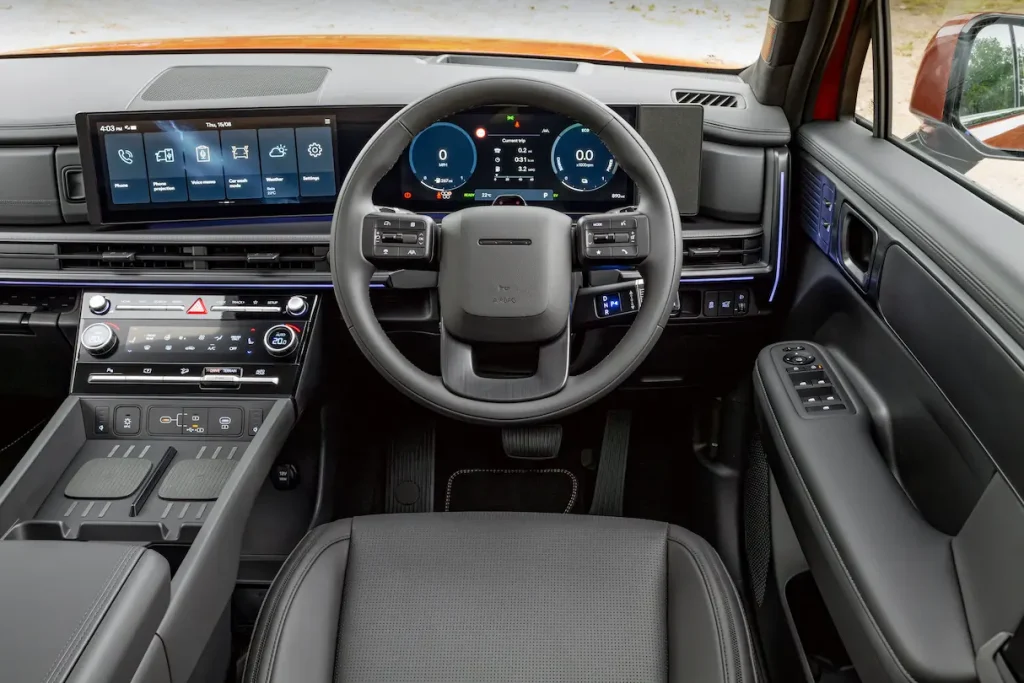
As for the front of the cabin, here we find a pair of 12.3in screens comprising the driver display and infotainment, arranged together in a curve in front of the driver, which looks good and functions well – a separate climate control panel also aids usability.
Despite being the entry-level spec in the Santa Fe range, the Premium equipment grade is appropriately named, with plenty of high-quality materials about the interior – even the inside of the A-pilar is plushly trimmed. A raised centre console adds to the high-end SUV feel.
Drive and performance
The new Santa Fe comes with two powertrain options – a 215hp conventional hybrid, and the 253hp plug-in hybrid tested here. Both feature a 160hp petrol engine, and this is paired with electric motors outputting 48kW and 72kW respectively. Running on electric power alone, the PHEV is reasonably perky around town, and if you’re gentle with the throttle it can continue in that mode up to at least A-road speeds (a 13.8kWh battery allows an official EV-only range of 33 miles).
Once the petrol engine is also involved, the Santa Fe is capable of fairly rapid acceleration – impressively so given its size.
The Santa Fe feels planted and reliable when cornering, which is about as much as you can reasonably ask of a large SUV of this type, while the suspension does a good job smoothing over bumps at speed, barring occasional disturbances from changing camber (our test route contained plenty of uneven Welsh mountain roads).
An interesting feature is the ‘coasting’ notification that pops up when you’re approaching a junction, to tell you that you can lift off the accelerator at that point and coast to the stop line, saving fuel. It’s a neat idea, and although we did find the braking effect that cuts in as you get close to the junction a bit conservative, this is perhaps understandable.
One ergonomic annoyance during our test was the pedal box being a bit tight for your correspondent’s size 11 feet, particularly around the brake pedal – strangely not the first time we’ve come across this issue with a Hyundai.
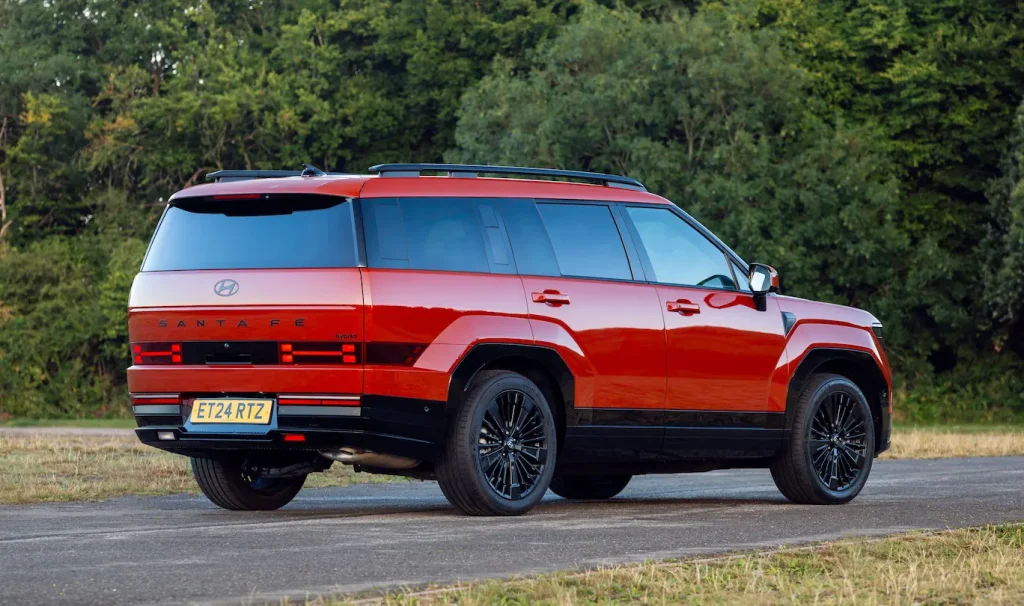
If you’re looking for another plug-in hybrid seven-seater, then excluding far more expensive choices from premium brands the only real option is the Santa Fe’s cousin, the Kia Sorento. And this may be an attractive alternative for fleets, since the starting point for the Sorento PHEV range is more than £4,000 cheaper than that for the Hyundai. However, the Santa Fe still does plenty to impress – and we wouldn’t be surprised to see it attract drivers away from those aforementioned premium brands.
Positive: Imposing styling, practical interior, premium feel
Negative: Kia Sorento is cheaper, cramped pedal box
Standard equipment: 20in alloy wheels, electrically operated and folding door mirrors, privacy glass, front and rear LED lighting, smart power tailgate, roof rails dual curved display set-up with 12.3in driver display and 12.3in infotainment touchscreen, sat-nav, wireless Apple Carplay and Android Auto connectivity, Bluelink connected car service with three-year subscription, USB-C ports for all three rows of seats, wireless phone charging, electrically controlled and heated front seats with separate driver’s seat lumbar support.
Engines: Hybrid: 215hp 1.6; Plug-in hybrid: 253hp 1.6
Equipment grades: Premium, Ultimate, Calligraphy
Transmissions: Six-speed automatic
| Model | Hyundai Santa Fe Premium Plug-in Hybrid |
| P11D | £51,830 |
| Residual value | 49.4% |
| Depreciation | £25,866 |
| Fuel | £2,300 |
| Service, maintenance and repair | £3,776 |
| Cost per mile | 53.23p |
| Fuel consumption | 166mpg |
| CO2 (BIK%) | 38g/km (12%) |
| BIK 20/40% a month | £104/£207 |
| Luggage capacity | 621 litres |
| Engine size/power | 1,598cc/1360hp with 72kW electric motor |
| Score | 8/10 |

